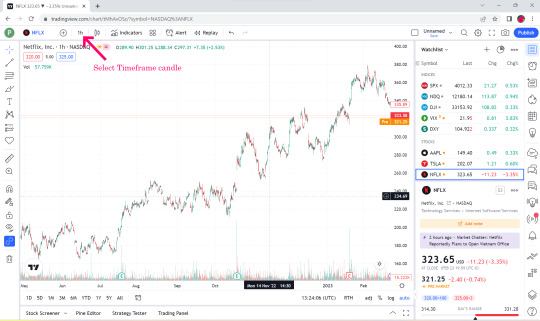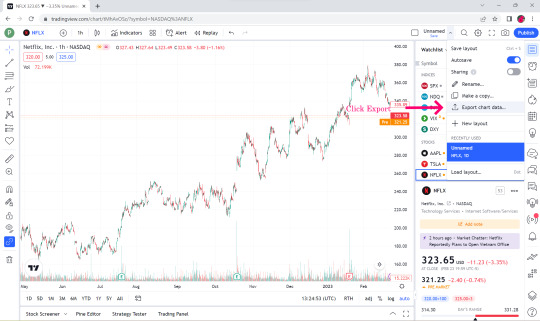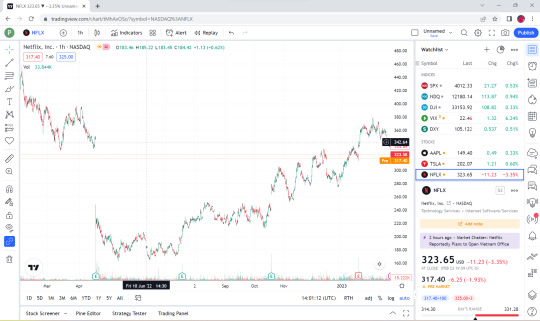#import export trade data
Text
Unveiling the Power of Import Export Data Providers: A Comprehensive Guide

In today's interconnected global economy, businesses rely heavily on import and export activities to fuel growth and expansion. However, navigating the complexities of international trade requires access to accurate and timely information. This is where import export data providers come into play. In this guide, we will delve into the various aspects of import export data providers, their significance, and how businesses can leverage their services to gain a competitive edge.
Understanding Import Export Data Providers
Import export data providers are entities that specialize in collecting, organizing, and analyzing data related to international trade activities. Their primary goal is to offer valuable insights and intelligence to businesses engaged in import and export operations. These providers aggregate data from various sources, including customs agencies, shipping manifests, trade associations, and government databases, to create comprehensive datasets that offer a holistic view of global trade dynamics.
The Significance of Import Export Data
1. Market Analysis and Intelligence
Import export data providers offer businesses a wealth of information to analyze market trends, identify emerging opportunities, and assess demand-supply dynamics. By studying historical trade patterns and monitoring current transactions, companies can make data-driven decisions regarding market entry, product pricing, and distribution channels. This market intelligence is invaluable for businesses seeking to optimize their strategies and capitalize on lucrative market segments.
2. Competitor Benchmarking
Understanding competitors' import and export activities is essential for maintaining a competitive edge in the global marketplace. Import export data providers enable businesses to track competitors' shipments, identify key markets and customers, and benchmark performance metrics such as pricing, volume, and market share. This competitive intelligence empowers businesses to refine their strategies, differentiate their offerings, and stay ahead of the competition.
3. Supply Chain Optimization
Efficient supply chain management is critical for businesses operating in the import-export domain. Import export data providers help businesses optimize their supply chains by providing insights into transportation routes, shipping schedules, and logistical trends. By analyzing shipping data and identifying potential bottlenecks or inefficiencies, companies can streamline their operations, reduce costs, and improve delivery times.
Choosing the Right Import Export Data Provider
Selecting the right import export data provider is crucial for maximizing the value of trade intelligence. Several factors should be considered when evaluating potential providers:
1. Data Accuracy and Reliability: Ensure that the provider's data sources are reliable, up-to-date, and comprehensive. Look for providers that use multiple data points and employ rigorous quality control measures to ensure data accuracy.
2. Global Coverage: Choose a provider with extensive coverage across multiple countries and regions. A global dataset allows businesses to gain insights into diverse markets and identify cross-border trade opportunities.
3. User-Friendly Interface and Analytical Tools: Opt for a provider that offers intuitive interfaces and powerful analytical tools. User-friendly dashboards, customizable reports, and advanced analytics capabilities make it easier for businesses to extract actionable insights from import export data.
Leveraging Import Export Data for Business Growth
1. Market Expansion and Diversification
Import export data provides businesses with valuable insights into new market opportunities and emerging trends. By analyzing import and export patterns, businesses can identify underserved markets, assess consumer preferences, and develop targeted expansion strategies. This data-driven approach enables businesses to diversify their revenue streams and reduce dependence on existing markets.
2. Risk Mitigation and Compliance
International trade involves inherent risks, including regulatory compliance issues, geopolitical tensions, and supply chain disruptions. Import export data providers help businesses mitigate these risks by providing timely alerts, regulatory updates, and compliance monitoring tools. By staying informed and proactive, businesses can navigate regulatory challenges and minimize the impact of unforeseen events on their operations.
3. Strategic Decision-Making
Import export data serves as a valuable resource for strategic decision-making across various business functions. From inventory management and procurement to pricing strategy and market positioning, businesses can leverage import export data to optimize processes, allocate resources effectively, and drive growth. By integrating trade intelligence into their decision-making processes, businesses can gain a competitive advantage and achieve long-term success in the global marketplace.
Conclusion
Import export data providers play a pivotal role in helping businesses navigate the complexities of international trade. From market analysis and competitor benchmarking to supply chain optimization and risk mitigation, import export data offers invaluable insights that drive strategic decision-making and fuel business growth. By choosing the right data provider and leveraging trade intelligence effectively, businesses can unlock new opportunities, mitigate risks, and stay ahead in today's dynamic and competitive global economy.
0 notes
Text
In our interconnected world, the exchange of goods and services across borders is crucial for shaping the global economy. Malaysia, a key player in international trade, contributes significantly. Analyzing Malaysia's trade data, including the Importers List and Export Data, provides valuable insights into economic trends, market dynamics, and the global economy's overall health. Explore the article "The Impact of Malaysia Trade Data on the Global Economy" to gain more knowledge.
#export#import#import data#export data#trade data#market research#data driven#global market#global trade data#malaysia#Malaysia Trade Data#Malaysia Importers List#Malaysia Export Data#Data Import Export Data#international trade
2 notes
·
View notes
Text
How to Import Candle Charts from TradingView websites?
youtube
💥S#.Data provides functionality that supports automatic downloading of historical market data from many data sources. But sometimes websites do not provide an API to make the process automatically. Fortunately, in addition to downloading you can import market data from CSV files directly.
💥TradingView is a charting platform and social network used by many traders and investors worldwide to spot opportunities across global markets. The major feature of the website - various historical dataset - that you can download as a csv file for further usage (e.g. - backtesting, analyzing).
💥For the TradingView website, you need a premium subscription to be able to export candles. Let’s look at this process step-by-step to understand how we can import this market data into S#.Data.

👉Visit TradingView Website.

👉Select Search Market for example NFLX.
👉Click Launch Chart for view.


👉Select Time Flame Candle for example 1 hr.

👉Select Export Chart Data.

👉In the Time format box, select ISO time.

👉Click Export.

👉Open the downloaded Market data file. You can see that the top bar is date and time, open price, low price, close price, volume and volume MA.
👉S#.Data supports only the first 6 data, the last one volume MA we will not take.

👉Open up your S#.Data Application.
👉Visit our instruction if you doesn't have S#.Data application.
👉How I can get S#.Data
👉Go to S#.Data application, click select import and Click candle.

👉Find the name of the file we just downloaded (btw, you can import by directories as well).

👉Click to select the file that we downloaded, click open.

👉Click to select the time frame to match the timeframe we selected in the file we downloaded initially in the data type field.

👉Setting S#.filed from the Security and Board fields.
👉By default put the Instruments Code that we downloaded. For example NFLX in the Security slot in the instrument board e.g. BATS by default.
👉Enter numbers 0-5 in the date box and so on. Remember - numeration started from 0, not from 1.

👉Skip lines Row 1 cause it contains data columns description.


👉Open the file that we downloaded again, select Copy, time, date that we started downloading Market Data.

👉Press Paste in the Date Format field.

👉Change Numbers to Code Letters By yyyy-MM-dd HH:mm:ss You can read more about format on Microsoft website

👉Once everything is entered correctly, click Preview to double check before importing.
👉When the screen shows this page, there is no problem.

👉But if you press Preview and the screen appears like this, check the details that you have entered again to see if there is any mistake, correct it and press Preview again.

👉Once it's verified and there are no problems, press Import.

👉When done, click Back to go to Common.

👉Click on our Security.
👉Click on Instrument Tab to view market Data.

👉Now let's see what data was imported. Click Candles.


👉Select Security, select the Instrument to view by double-clicking the Instrument Tab, move it to the right side and click OK.

👉Select date and time frame.

👉Click View Market data.
👉Click View Candle Chart to see our candles as a chart.


👉This is a Candle Chart comparison between the Chart that was in TradingView website before it was downloaded and the downloaded Chart rendered in S#.Data application.
💥💥Now you know how to import from a CSV file. To make this process you no need to use only limited websites like TradingView. S#.Data supports any format of CSV files that you can download from a variety of sources and websites.
💥Hope this blog is interesting for you. Please comment us what you interesting to know more about S#.Data. We will try to write our next posts.
Sources : StockSharp.com
#downloading of historical market data#import market data#charting platform#export candles#trading view#backtesting#Youtube
1 note
·
View note
Text
#hs code 7007#import shipment data of kenya#kenya hs code 7007 import data#hs code for export#hs code for import#kenya hs code#shipment#trade#custom#hs code search#exim#harmonized systems code#import
2 notes
·
View notes
Text
The Surge of Mobile Exports from India in 2024

In recent years, India has emerged as a formidable player in the global electronics landscape, particularly in the realm of mobile exports. As of 2024, the Indian mobile export industry is witnessing significant growth, driven by favorable government policies, foreign direct investment, and a burgeoning domestic market. This article explores the current state of mobile export from India, the key players involved, and the implications for the global smartphone market.
Overview of Mobile Exports from India
The mobile export from India has seen a meteoric rise, with projections indicating that exports could exceed $12 billion in value by the end of 2024. This impressive growth can be attributed to several factors, including the government’s "Make in India" initiative and the Production Linked Incentive (PLI) scheme, both designed to bolster domestic manufacturing and attract international investments.
Growth Drivers
Several factors are propelling the growth of mobile exports in India:
1. Government Initiatives
The Indian government has introduced various programs to promote local manufacturing, such as tax breaks, subsidies, and the establishment of electronics manufacturing clusters. These initiatives aim to attract both domestic and foreign manufacturers to set up production facilities in India, which has proven effective in enhancing the mobile export sector.
2. Investment in Infrastructure
Investment in infrastructure has also played a critical role in boosting mobile exports. Improved logistics, reliable power supply, and streamlined regulatory processes make India an attractive destination for mobile manufacturers. This investment is crucial for facilitating large-scale production and ensuring timely exports.
3. Technological Advancements
The rapid advancement of technology has enabled Indian manufacturers to produce high-quality smartphones that meet global standards. Companies are increasingly investing in research and development to innovate and improve their product offerings, further enhancing their competitiveness in the international market.
4. Skilled Workforce
India’s vast pool of skilled labor is another significant factor driving mobile exports. The country boasts a workforce proficient in electronics manufacturing and engineering, enabling companies to maintain high production standards and innovate effectively. This skilled labor force is essential for both domestic and foreign companies seeking to enhance their manufacturing capabilities in India.
Key Mobile Exporters in India
Several major players dominate the mobile export landscape in India, Leading mobile exporter in India are:
1. Apple Inc.
Apple has been a trailblazer in the Indian mobile export sector, establishing manufacturing facilities through its contract manufacturers like Foxconn and Wistron. The production of iPhones in India has not only bolstered local employment but has also significantly contributed to India’s mobile export data.
2. Samsung Electronics
Samsung operates one of the largest smartphone manufacturing plants in Noida, where it produces a wide range of devices, from budget models to flagship smartphones. The company has ramped up its export operations, making it a critical player in the Indian mobile export market.
3. Xiaomi
Xiaomi has rapidly gained a significant market share in India, thanks to its affordable smartphones. The company has invested heavily in local manufacturing, exporting a considerable volume of devices to countries across Southeast Asia and Africa.
4. Vivo and Oppo
Both Vivo and Oppo, Chinese smartphone manufacturers, have established substantial production facilities in India. They focus on catering to the growing demand for mid-range smartphones, further enhancing India’s export capabilities.
5. Lava International
As a homegrown brand, Lava International has also made strides in mobile exports. The company primarily targets budget-conscious markets, exporting feature phones and affordable smartphones to various countries.
Analyzing Mobile Export Data
The mobile export data for 2024 indicates robust growth, with significant exports to key markets including:
1. North America
India has become an essential supplier of smartphones to North America, with Apple’s production in India catering to a large portion of the U.S. market. This trend is expected to continue as more brands establish manufacturing operations in India.
2. European Union
Countries in the EU, particularly Germany and the UK, have seen increased imports of Indian-manufactured smartphones. Samsung and Xiaomi lead this charge, exporting a diverse range of devices to meet consumer demand.
3. Southeast Asia
Indian smartphone manufacturers are tapping into the growing demand in Southeast Asian countries like Indonesia, Vietnam, and Thailand. Competitive pricing and quality have made Indian smartphones increasingly popular in these regions.
4. Middle East and Africa
The demand for affordable smartphones in the Middle East and Africa has surged, making these regions vital markets for Indian manufacturers. Brands like Lava and Xiaomi are successfully exporting budget-friendly smartphones, addressing the needs of price-sensitive consumers.
Understanding Mobile Phone HS Code
The Harmonized System (HS) code plays a crucial role in facilitating international trade. The mobile phone hs code is 8517.12, which covers smartphones capable of connecting to cellular networks. Accurate classification using the HS code is essential for mobile exporters in India to ensure compliance with customs regulations and to expedite the export process.
Conclusion
The mobile export landscape in India is poised for significant growth in 2024, with the country solidifying its position as a key player in the global smartphone market. Supported by government initiatives, foreign investments, and a skilled workforce, India is well-equipped to meet the growing demand for mobile devices worldwide.
As Indian manufacturers continue to innovate and expand their production capabilities, the outlook for mobile exports remains positive. By leveraging its strengths and addressing challenges, India can capitalize on its position in the global supply chain, ensuring sustainable growth and economic benefits for years to come. The future of mobile exports from India is bright, and the country is set to make its mark on the international stage. However if you need the list of smartphone exports by country, mobile phone HS code or global trade data connect with import and export data provider platforms like Seair Exim solutions.
Post By:
Seair Exim Solutions
Phone No.: 099900 20716
Address: B1/E3 Mohan Cooperative Industrial Estate Near Mohan Estate Metro Station Opposite Metro Pillar No:-336, NH-19, New Delhi, Delhi 110044
Also Read : A Comprehensive Guide to Garment Exports from India in 2024
#global trade data#international trade#export#trade data#trade market#global market#import export data#mobile#mobile export data#mobile hs code#mobile export#mobile exporter#mobile market#mobile industry#mobile trade
0 notes
Text
Vietnam trade data | Vietnam import export data provider

Get the latest Vietnam trade data statistics. Find customized reports of Vietnam imports and exports shipments based on our Vietnam import export data. Contact Us: +9625812393 | Email: [email protected]
#Vietnam trade data#best Vietnam trade data#Vietnam import export data provider#Vietnam import export#import export data
1 note
·
View note
Text
Casting slus
#casting clay grafite curcible#youtube#black stories#digital painting#easter#how take iec code at belfast northern ireland uk#export import data#global trade data
0 notes
Text
China’s Top Trading Partners in 2023-24: A Comprehensive Overview

China is home to 17% of the world's population, making it the biggest consumer of many goods and commodities. Due to its large workforce, China produces numerous products in vast quantities, allowing it to meet much of its domestic demand and export the surplus to other countries. Conversely, China is one of the top importers of many products.
In this blog, we will discuss China’s top trading partners, which help China maintain its exports and imports. Additionally, we will overview China's top export and import partners.
China Customs Database Overview
China Import Export Data
According to the China export data, total exports from China stood at US$ 3.73 trillion in 2023-24. China is the world's largest exporter. The top exports of China in 2023-24 include:
Broadcasting equipment ($276 billion)
Integrated Circuits ($215 billion)
Computers ($214 billion)
Office machine parts ($118 billion)
Semiconductor Devices ($74 billion)
According to China customs data, total imports into China stood at US$ 2.16 trillion in 2023-24. China is the world's second-largest importer. The top imports of China in 2023-24 include:
Crude petroleum ($290 billion)
Integrated circuits ($235 billion)
Iron ore ($108 billion)
Petroleum gas ($76 billion)
Gold ($70 billion)
Top 10 Trading Partners of China
Here is the list of the top trading partners of China:
United States
Japan
South Korea
Hong Kong
Taiwan
Russia
Vietnam
Australia
Germany
Malaysia
Detailed Overview of China’s Top Trading Partners in 2023-24
United States: The United States is China’s top trading partner, with a total trade volume of over US$ 664.5 billion in 2023-24. The US is a major supplier of soybeans, integrated circuits, and crude petroleum to China. China’s main exports to the US include broadcasting equipment, computers, and office machine parts.
Japan: Japan is China's second-largest trading partner, with a total trade volume of US$ 310.8 billion in 2023-24. China’s main exports to Japan include cement, headgear, and copper. China’s main imports from Japan include machines, textiles, and chemical products.
South Korea: South Korea ranks third among China’s top trading partners, with a total trade volume of US$ 310.7 billion in 2023-24. The main exports from China to South Korea include iron, steel, plastic, and machinery. China’s main imports from South Korea include integrated circuits, cyclic hydrocarbons, and broadcasting equipment.
Hong Kong: Hong Kong is the fourth-largest trading partner of China, with a total trade volume of over US$ 288.2 billion in 2023-24. Hong Kong is a major importer of China's goods, including gas turbines, gold, and pitted fruits. The primary exports from China to Hong Kong are broadcasting equipment, integrated circuits, and office machine parts.
Taiwan: Taiwan is the fifth-largest trading partner of China, with a total trade volume of US$ 267.8 billion in 2023-24. The main exports from China to Taiwan include broadcasting equipment, integrated circuits, and office machine parts. China’s main imports from Taiwan include machinery, electronics, metals, and rubbers.
Russia: Russia is China's sixth-largest trading partner, with a total trade volume of US$ 240.1 billion in 2023-24. The main exports from China to Russia include computers, giant construction vehicles, and broadcasting equipment. China’s main imports from Russia include petroleum gas, crude petroleum, and coal briquettes.
Vietnam: Vietnam is China's seventh-biggest trading partner, with a total trade volume of US$ 229.8 billion in 2023-24. The main exports from China to Vietnam include silk, vegetable fat oil, and nickel. China’s main imports from Vietnam include telephones, broadcasting equipment, and integrated circuits.
Australia: Australia ranks eighth among China’s top trading partners, with a total trade volume of US$ 229.1 billion in 2023-24. The main exports from China to Australia include electronic circuits, shipping containers, and semi-trailers. China’s main imports from Australia include iron ore, gas, and oil.
Germany: Germany is the ninth-largest trading partner of China, with a total trade volume of US$ 206.8 billion in 2023-24. China’s primary exports to Germany include broadcasting equipment, integrated circuits, and office machine parts. China’s main imports from Germany include machinery, electronics, metals, and rubbers.
Malaysia: Malaysia is the tenth-largest trading partner of China, with a total trade volume of US$ 190.2 billion in 2023-24. The main exports from China to Malaysia include refined petroleum, printed circuit boards, and integrated circuits. China’s main imports from Malaysia include machinery, electronics, and chemical products.
China’s Top Export Partners
Here is the list of China exporting countries:
United States
Hong Kong
Japan
South Korea
Vietnam
India
Russia
Germany
Netherlands
Malaysia
According to the China export database. The United States is a top China export partner. In 2023-24, China exported goods worth around US$ 500 billion to the US. China is the largest export partner, followed by Hong Kong and Japan.
China’s Top Import Partners
Here is the list of China’s largest import partners:
Taiwan
United States
South Korea
Japan
Australia
Russia
Brazil
Germany
Malaysia
Vietnam
According to China import export data for 2023-24, Taiwan is the biggest China import partner. Taiwan exported goods worth US$ 199.3 billion to China in 2023-24.
How to Get Global Trade Data?
Since globalization, trade between countries has increased rapidly. To enter the international market, traders must obtain global trade data to understand the latest market trends and statistics related to top exporting and importing countries. Seair Exim Solutions provides easy-to-use trade data for 130+ countries with just one subscription.
Wind Up!
China is one of the world’s largest economies. It is rich in resources and has a large population, making it the top exporter and importer globally. Many traders need global trade data or global trade insights. For specific data country-wise, product-wise, and HS Codes, connect with us on our extensive dashboard at Seair Exim Solutions.
#top trading partners of china#trading partners of china#china export data#china import export data#china customs data#china export database#china exporting countries
0 notes
Text
Explore trading partners of China in 2023-24 with insights into its top export and import partners. Learn about key trading relationships, major export and import products, and global trade data trends.
#top trading partners of china#trading partners of china#china export data#china import export data#china customs data#china export database#china exporting countries
0 notes
Text
Analyzing Chile's Trade Landscape: Key Insights and Data

Chile, a prominent player in the global trade arena, is known for its diverse exports ranging from minerals to agricultural products. To comprehend the intricate dynamics of Chile's trade, it is essential to delve into Chile Customs Data, which provides a comprehensive view of the country's import and export activities. This article offers an in-depth analysis of Chile Trade Data, including insights into Chile suppliers data, Chile exporter data, and Chile importer data, shedding light on the nation's trade patterns and economic strategies.
Understanding Chile Customs Data
Chile Customs Data is a valuable resource for businesses, policymakers, and analysts. It includes detailed records of goods entering and leaving the country, covering aspects such as product descriptions, quantities, values, and origins or destinations. This data is crucial for understanding the trade dynamics and economic health of Chile.
Key Components of Chile Trade Data
Chile Trade Data encompasses various elements that provide a comprehensive view of the country's trade activities. These components include:
Import Data Chile: Information on the goods and services brought into the country, detailing the quantities, values, and countries of origin.
Export Data: Records of goods and services exported from Chile, including product types, volumes, values, and destination countries.
Chile Suppliers Data: Data on suppliers within Chile, highlighting their product offerings, volumes, and trade relationships.
Chile Importer Data: Information on entities importing goods into Chile, including company profiles, import volumes, and source countries.
Chile Exporter Data: Details of companies exporting goods from Chile, covering their product ranges, export volumes, and destination markets.
The Significance of Chile's Trade Data
The detailed analysis of Chile's trade data provides numerous benefits for different stakeholders:
Market Analysis: Businesses can use this data to identify trends, understand market demands, and pinpoint opportunities for expansion or investment.
Competitor Analysis: Companies can analyze the activities of their competitors, gaining insights into their market strategies and performance.
Economic Planning: Policymakers can utilize trade data to craft effective trade policies, promote economic growth, and enhance international trade relations.
Supply Chain Optimization: Importers and exporters can streamline their supply chains based on trade data, ensuring efficiency and cost-effectiveness.
Chile's Import Data: An Overview
Import data Chile reveals valuable insights into the goods and services that enter the country. This data highlights the diversity of Chile's imports, ranging from machinery and electronics to consumer goods and raw materials. Key aspects of Chile's import data include:
Product Categories: Major import categories include industrial machinery, vehicles, electronics, and chemicals. These imports are crucial for supporting Chile's industrial and consumer sectors.
Top Import Partners: Chile's primary import partners include the United States, China, Brazil, and Germany. These countries supply a significant portion of the goods imported into Chile.
Economic Impact: The import data underscores the importance of foreign goods in Chile's economy, facilitating industrial activities, technological advancements, and consumer satisfaction.
Chile's Export Data: Key Insights
Chile is known for its rich natural resources and agricultural products, making its export data particularly significant. Key elements of Chile's export data include:
Major Export Products: Copper, fruit, seafood, and wine are among the top export products. Chile is one of the world's leading copper producers, and its agricultural products are renowned for their quality.
Leading Export Destinations: The United States, China, Japan, and the European Union are major markets for Chilean exports. These countries import substantial volumes of Chilean goods, driving the country's export revenue.
Economic Contributions: Exports play a vital role in Chile's economy, contributing to GDP growth, employment, and foreign exchange earnings. The export data highlights the significance of the mining and agricultural sectors in Chile's economic landscape.
Analyzing Chile Suppliers Data
Chile suppliers data provides insights into the entities supplying goods within the country. This data includes:
Supplier Profiles: Information on companies supplying goods and services, including their product ranges, capacities, and trade relationships.
Market Reach: Data on the geographical distribution of suppliers' markets, both domestic and international.
Trade Volumes: Details on the quantities of goods supplied by different entities, helping businesses understand market dynamics and competition.
Understanding Chile Importer Data
Chile importer data is essential for understanding the demand side of the trade equation. Key aspects of this data include:
Importer Profiles: Information on companies importing goods into Chile, including their industry sectors, import volumes, and source countries.
Product Demands: Insights into the types of products in demand in the Chilean market, helping suppliers and exporters tailor their offerings.
Trade Relationships: Data on the trade relationships between Chilean importers and international suppliers, highlighting key partnerships and market dependencies.
Exploring Chile Exporter Data
Chile exporter data provides a detailed view of the entities involved in exporting goods from the country. Key elements include:
Exporter Profiles: Information on companies exporting goods, including their product ranges, capacities, and market reach.
Export Volumes: Data on the quantities of goods exported by different entities, helping businesses understand competitive dynamics and market shares.
Destination Markets: Insights into the international markets targeted by Chilean exporters, highlighting the global reach of Chile's trade activities.
The Role of Trade Data in Economic Strategy
Chile trade data is a vital tool for economic strategy and planning. Policymakers and businesses use this data to:
Craft Trade Policies: Develop policies that promote trade, enhance competitiveness, and protect domestic industries.
Identify Growth Opportunities: Pinpoint sectors and markets with high growth potential, driving investment and economic development.
Enhance Trade Relations: Strengthen trade relations with key partners, fostering economic cooperation and mutual growth.
Conclusion
Chile's trade data offers a comprehensive view of the country's import and export activities, providing valuable insights for businesses, policymakers, and analysts. By examining Chile Customs Data, Chile suppliers data, Chile exporter data, and Chile importer data, stakeholders can make informed decisions, optimize trade strategies, and contribute to the country's economic growth. Understanding and leveraging this data is crucial for navigating the complexities of global trade and ensuring sustainable economic development.
#Chile Customs Data#Chile suppliers Data#Chile Trade Data#Import data Chile#Chile exporter data#Chile Importer data
0 notes
Text
Brazil dominates global sugar production and exportation, vital for worldwide food supply chains. Alongside major producers like China, Thailand, India, and the United States, it contributes over 75% of the world's sugar. This blog explores Brazil's sugar industry motivations, current trends, and future prospects.
Visit Blog: https://medium.com/@seair.exim/brazil-sugar-exports-trends-shaping-the-future-market-d5eed3970182
#export#import#trade data#export data#international trade#global trade data#trade market#import export data#Brazil sugar export#sugar exporters in brazil#sugar exports from brazil#sugar exporting countries#biggest exporter of sugar#brazil sugar export data#brazil#sugar
0 notes
Text
Navigating Global Markets: Unveiling the Insights of Import-Export Trade Data

In the interconnected world of international commerce, import-export trade data serves as a crucial compass, guiding businesses, governments, and economists alike. This trove of information not only reveals the intricate dynamics of global supply chains but also empowers decision-makers with valuable insights for strategic planning and policy formulation. In this blog post, we delve into the depths of import-export trade data, exploring its significance, sources, and the manifold ways it influences the global economic landscape.
The Significance of Import-Export Trade Data:
Understanding the Pulse of the Global Economy
In an era characterized by unprecedented interdependence, import-export trade data emerges as a lighthouse that illuminates the ebbs and flows of the global economy. This data transcends mere numbers; it narrates the story of demand and supply, the evolution of industries, and the shifting alliances in international trade.
Insights Gleaned from Import-Export Trade Data:
Cracking the Code of International Commerce
1. Identifying Market Trends and Opportunities:
Import-export trade data is akin to a treasure map for businesses seeking new horizons. By analyzing patterns and shifts in trade volumes, companies can spot emerging markets and harness opportunities to diversify their customer base.
2. Supply Chain Optimization:
Delving deeper, trade data provides insights into supply chain efficiency. Companies can identify bottlenecks, optimize routes, and streamline their operations by understanding the movement of goods across borders.
3. Economic Indicator and Policy Formulation:
Governments and policymakers rely on trade data to gauge the health of their economies. Fluctuations in imports and exports can signal economic growth or downturns, prompting proactive policy adjustments.

Sources of Import-Export Trade Data:
Navigating the Sea of Information
1. Customs Agencies and Government Bodies:
National customs agencies play a pivotal role in collecting and maintaining trade data. Governments require accurate import-export data for taxation, regulation, and economic planning.
2. International Organizations:
Organizations like the World Trade Organization (WTO) and the United Nations Conference on Trade and Development (UNCTAD) collate global trade statistics. These bodies provide a broader perspective on international trade dynamics.
3. Private Data Providers:
In the digital age, several private companies aggregate and analyze trade data, offering specialized insights to businesses. These platforms often provide user-friendly interfaces, making the data more accessible.
Challenges and Limitations:
Navigating Murky Waters
While import-export trade data is undeniably valuable, it comes with its own set of challenges:
1. Data Accuracy and Consistency:
Discrepancies in data reporting among countries can lead to inaccuracies. Harmonizing data standards is crucial for creating a reliable global trade picture.
2. Hidden Informal Trade:
Not all trade activities are officially recorded. Informal trade, often referred to as "shadow trade," can skew the accuracy of the data representation.
3. Lack of Transparency:
Some countries may intentionally manipulate or withhold trade data for political or economic reasons, making it difficult to gain a complete understanding of global trade patterns.
The Future of Import-Export Trade Data:
Charting a Course for Tomorrow
1. Blockchain and Data Transparency:
Emerging technologies like blockchain hold promise for enhancing data accuracy and transparency. Smart contracts could automate the trade documentation process, reducing errors and fraud.
2. Predictive Analytics and AI:
Leveraging the power of predictive analytics and artificial intelligence, businesses can forecast trends, optimize inventory, and enhance decision-making based on historical trade data.
3. Evolving Trade Relationships:
As geopolitical landscapes evolve, so does international trade. Analyzing import-export data can shed light on the effects of trade agreements, tariffs, and diplomatic shifts.
Conclusion: In the vast ocean of global commerce, import-export trade data acts as a steadfast compass, guiding stakeholders through turbulent waters and uncharted territories. Its insights ripple across industries, governments, and economies, empowering decision-makers to adapt, strategize, and flourish in an interconnected world. As technology continues to refine data collection and analysis, the potential for harnessing the true power of import-export trade data becomes ever more tangible. So, as we sail toward an increasingly interconnected future, one thing remains clear: understanding the nuances of trade data is paramount for charting a course to prosperity.
#trade data#trade data statistics supplier#trade statistics#Import-Export Trade Data#Import Export Trade Data
0 notes
Text
Embarking on Malaysia's import journey? Navigate the intricacies of the country's import landscape with confidence using our "10 Tips for Navigating Malaysia’s Importers List." From understanding regulatory nuances to leveraging online directories and attending trade shows, these insights are your key to forging successful trade relations. Whether you're a seasoned importer or a newcomer, these tips will empower you to make informed decisions and establish fruitful partnerships in Malaysia's dynamic market.
#export#trade data#export data#import#import data#marketresearch#internationaltrade#datadriven#globaltrade#globaltradedata#malaysia#export import data#Malaysia Importers List#Malaysia Export Data#Malaysia Import Data
2 notes
·
View notes
Text
How to export rubber products from India to Indonesia
India leads global rubber industry, targeting Indonesia's market. Learn essential steps for successful rubber export ventures.

0 notes
Text

The global trade landscape is constantly evolving. This guide delves into the hottest trends shaping import and export, from the rise of e-commerce platforms to the impact of automation on supply chains. We'll explore how these trends affect businesses and countries alike, providing insights into navigating the ever-changing world of international trade.
#export and import business#import and export#export#export business#global trade#international trade#global trade data
0 notes
Text
A Comprehensive Guide to Garment Exports from India in 2024

India has long been a key player in the global garment industry, with the country’s textile and apparel exports making significant contributions to its economy. In 2024, garment exports from India continue to rise, driven by increasing demand from international markets and the country’s competitive advantages in textiles. This article explores the factors behind this growth, the top garment exporters, India’s position in the global market, and provides insights into garment export data for 2024.
Garment Exporters in India: Leading the Charge
Garment exporters in India have played a crucial role in establishing the country as a leading player in the global apparel market. By leveraging India's competitive advantages such as affordable labor and a vast textile base, these exporters have consistently offered high-quality products at competitive prices. They have also invested in modern manufacturing facilities and embraced sustainable practices to cater to the evolving demands of global consumers. Their commitment to quality, innovation, and sustainability has significantly contributed to the success of India's garment export industry.
A key strategy employed by Indian garment exporters to remain competitive is product diversification. By offering a wide array of garments, from traditional attire to modern fashion and specialized clothing, they cater to diverse consumer preferences across the globe. Additionally, many Indian exporters focus on customization and personalized services, meeting the specific needs of international buyers. Their adoption of sustainable and ethical practices, along with the use of eco-friendly materials and fair labor standards, has enhanced their global reputation, attracting environmentally conscious consumers. Technological innovation, such as automation and digital design tools, further improves production efficiency and product quality, ensuring Indian garment exporters continue to thrive in the global marketplace.
Why Exporting Garments from India is Increasing?
The growth of exporting garments from India can be attributed to several key factors:
Diverse Product Range: India offers a wide range of garments, from traditional ethnic wear to modern fashion apparel. This diversity caters to various market needs across the world, making India a versatile exporter.
Cost-Effective Labor: One of India’s competitive advantages lies in its cost-effective labor force, allowing garment manufacturers to produce high-quality apparel at lower costs compared to many other countries.
Government Support: The Indian government has introduced various initiatives to promote the textile and garment industry. Schemes like the Production Linked Incentive (PLI) scheme and rebates on state and central taxes for exporters have further boosted garment exports from India.
Sustainability Initiatives: In recent years, sustainability has become a critical factor in the garment industry. Indian manufacturers are increasingly adopting eco-friendly practices, which appeal to global buyers looking for ethical and sustainable products.
Improved Infrastructure: Over the last decade, India has made significant improvements in its manufacturing and export infrastructure, which has reduced lead times and improved the overall efficiency of the garment export industry.
Global Demand Shift: With China’s focus shifting to high-tech industries, many global buyers are looking for alternative garment suppliers. India, with its large production base and skilled workforce, is emerging as a preferred destination for international buyers.
Top 10 Garment Exporting Countries in the World
Before delving into India’s position in the garment export industry, it’s essential to look at the top 10 garment exporting countries in the world in 2024:
China
Bangladesh
Vietnam
India
Turkey
Indonesia
Cambodia
Italy
Germany
Pakistan
India holds the fourth position globally, with its garment export industry contributing significantly to its foreign exchange reserves. The country’s garment industry is on an upward trajectory, with continuous improvements in quality, innovation, and sustainability.
Top 10 Garment Export Companies in India
India is home to numerous garment manufacturers and exporters, many of which have gained international recognition for their product quality and reliability. Below is a list of the top 10 garment export company in India in 2024:
Shahi Exports Pvt. Ltd.
India's largest garment exporter, Shahi Exports, has a strong presence in global markets and a reputation for high-quality products.
Raymond Ltd.
Known for its premium apparel, Raymond is a significant player in India’s textile and garment export market.
Arvind Limited
A leading textile company, Arvind exports garments to several countries, focusing on high-end apparel.
Gokaldas Exports
A well-established garment exporter, Gokaldas has built a strong global client base over the years.
Welspun India
Specializing in home textiles, Welspun also has a strong portfolio of garment exports.
Aditya Birla Fashion and Retail Ltd.
Part of the Aditya Birla Group, this company exports a range of garments, including fashion apparel and casual wear.
Rupa & Co. Ltd.
Known for its innerwear, Rupa has a growing export market for its diverse garment offerings.
Pioneer Embroideries Ltd.
With a strong foothold in the embroidered garment segment, Pioneer exports garments to markets worldwide.
Indian Terrain Fashions Ltd.
A key player in men’s casual wear, Indian Terrain has made significant inroads into global markets.
Monte Carlo Fashions Ltd.
Known for its winter wear, Monte Carlo exports a range of garments to several countries.
These companies represent India’s best in the garment export industry, combining innovation, quality, and global appeal to make a mark in international markets.
Who is India’s Largest Garment Exporter?
As of 2024, Shahi Exports Pvt. Ltd. holds the title of India's largest garment exporter. The company operates several manufacturing units across India and exports garments to major markets like the USA, Europe, and the Middle East. With a strong focus on sustainability and quality, Shahi Exports has solidified its position as a leader in the Indian garment export industry.
Garment Export Data for 2024
According to recent garment export data, India’s apparel exports have seen steady growth, with the total export value reaching approximately USD 18 billion in 2024. The major export destinations for Indian garments include the USA, the European Union, the United Arab Emirates, and the UK. Key trends from the export data include:
Increased Demand in the US and EU: The US and European Union remain the largest importers of Indian garments, with demand for both fashion and casual wear growing steadily.
Emerging Markets: Countries in Africa, South America, and Southeast Asia are emerging as new markets for Indian garments, particularly for affordable and durable clothing.
Sustainability Focus: Export data indicates that there is a rising demand for sustainable and eco-friendly garments from India, with buyers increasingly prioritizing ethically sourced materials and production processes.
Online Sales Channels: With the rise of e-commerce, many garment exporters in India are expanding their presence on online platforms, enabling them to reach global consumers more efficiently.
Challenges and Opportunities
While garment exports from India continue to grow, the industry also faces several challenges:
Competition: India faces stiff competition from countries like Bangladesh and Vietnam, which offer lower labor costs and shorter lead times.
Trade Barriers: Tariff and non-tariff barriers imposed by importing countries can impact India’s garment exports.
Sustainability Costs: While sustainability is a growing trend, the costs associated with eco-friendly manufacturing processes can be high, affecting profitability for some exporters.
However, the industry is also brimming with opportunities:
Government Support: Continued support from the government, including export incentives, tax rebates, and infrastructure development, is expected to boost the industry further.
Innovation and Technology: Investments in technology, such as automation and advanced manufacturing techniques, are helping Indian garment manufacturers enhance efficiency and reduce costs.
Conclusion
In 2024, garment exports from India continue to thrive, with several top companies leading the way in global markets. With its diverse product range, cost-effective production, and growing focus on sustainability, India is well-positioned to maintain its strong presence in the international garment industry. By leveraging its strengths and addressing challenges, India’s garment export industry is poised for even greater success in the coming years. However, if you need garment export data, garment HS code, connect with ExportImportData.in.
#global trade data#international trade#export#trade data#trade market#global market#import export data#import#garment#garment export#garment exports from India#garment exporters in India#exporting garments from India#top 10 garment exporting countries in the world#top 10 garment export company in India#India's largest garment exporter#garment export data
0 notes